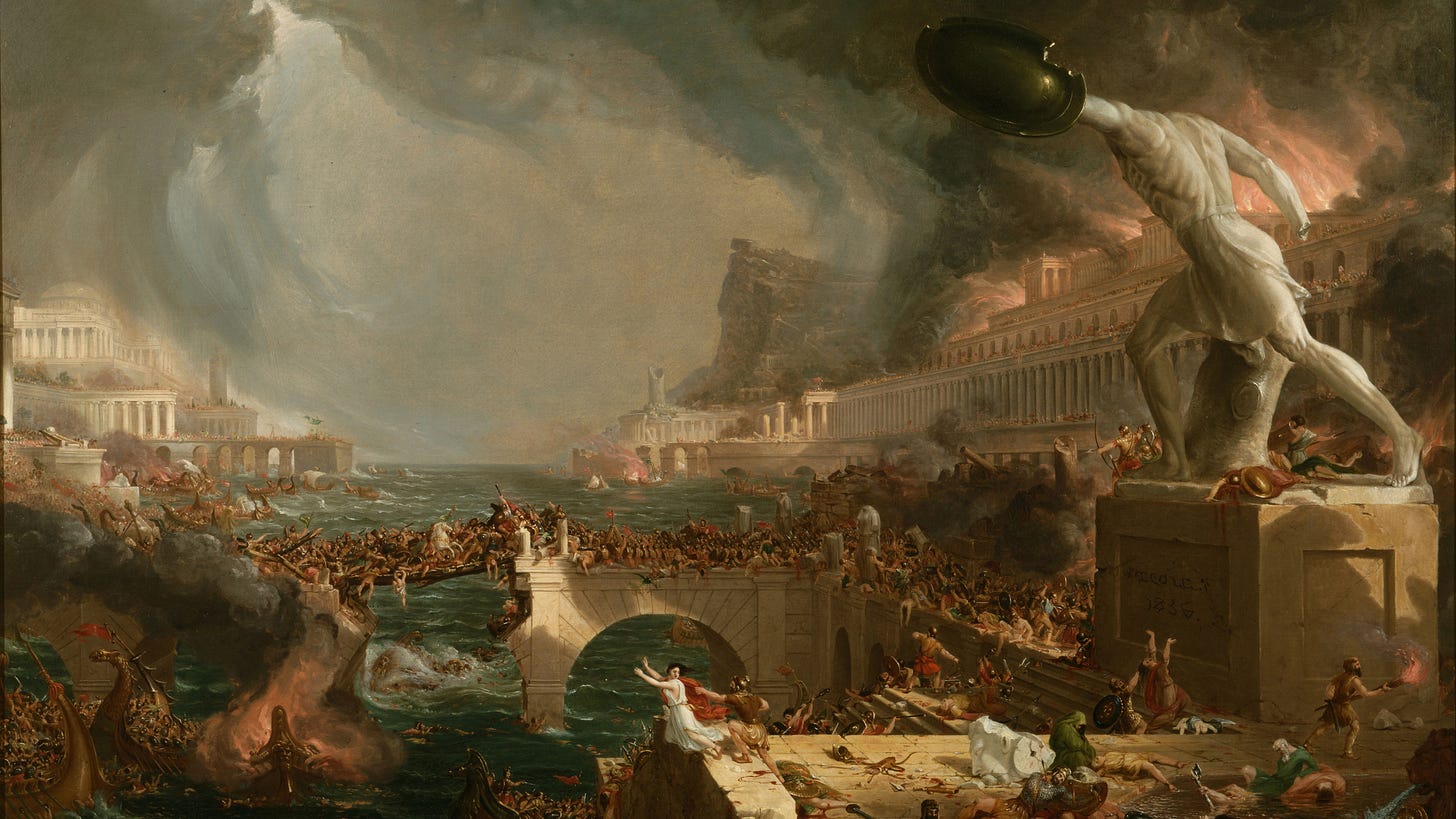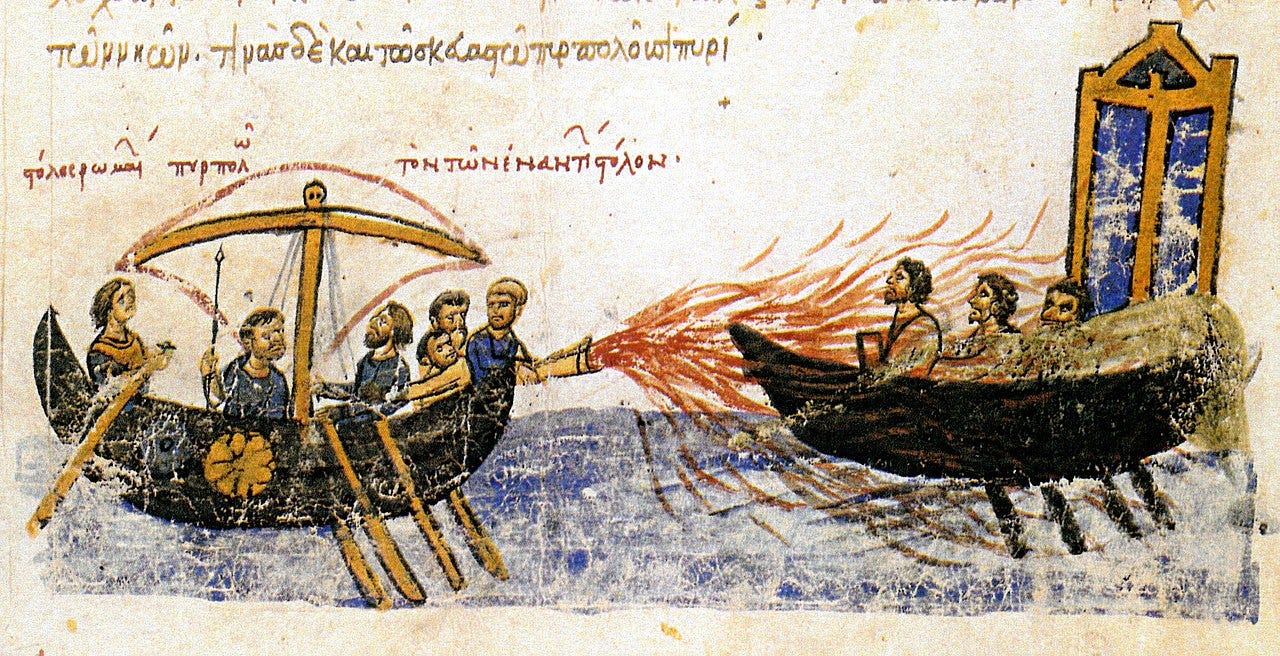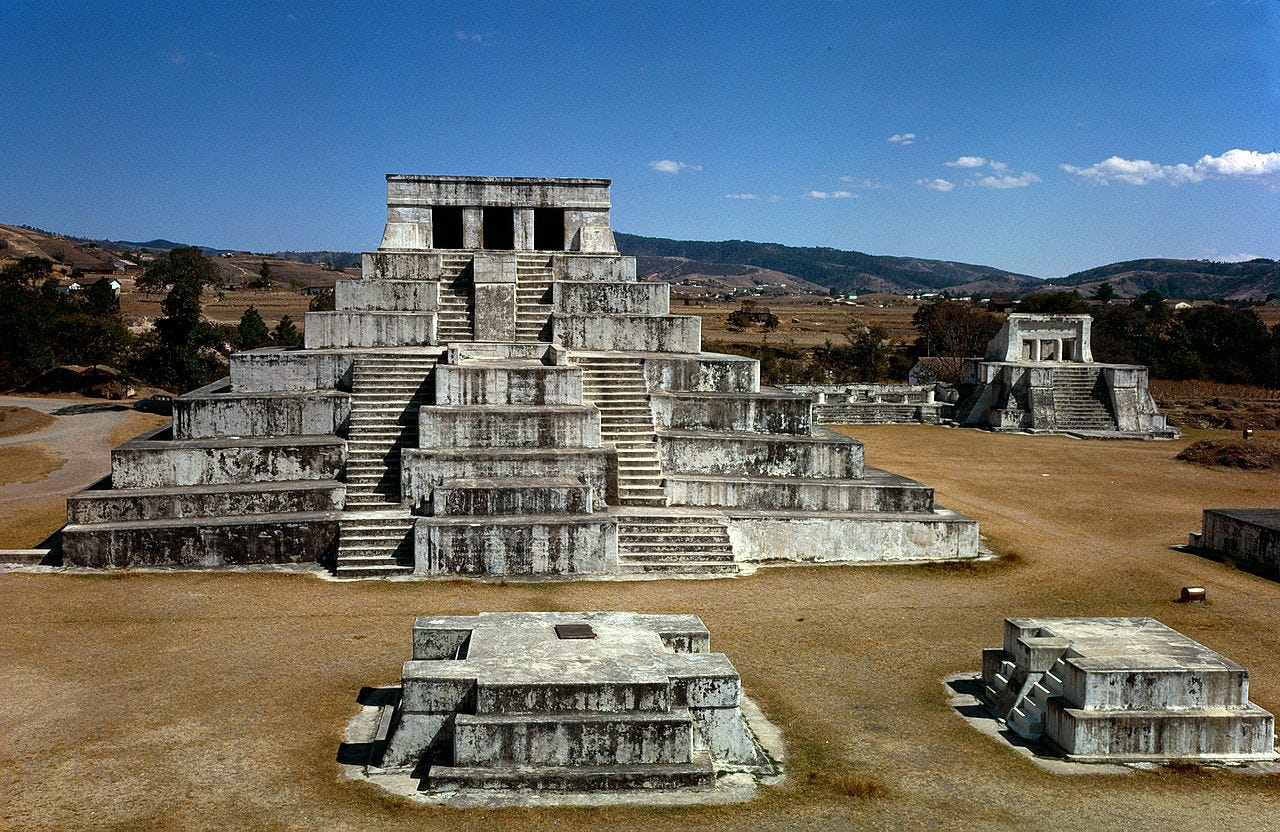The Boundaries Of Ancient History
What actually is ancient history?
For my first post on this platform I thought it would be a good idea to start from the basics, the roots, and answer the question of what ancient history really means. I will explain my reasoning for what I consider to be ancient history so it would be clear what I will be writing about. This is nothing new and I have been using this model for years on my Facebook page, but I never had enough space to explain the logic behind these cycles and the chosen time frame of ancient history, and so I will do that here.
The Cycles
Let’s start from the explanation of these historical cycles. It’s pretty simple actually - a cycle starts with the rise of a certain civilization, goes on with that civilization developing and reaching its golden age, and then ends with the collapse of that civilization. This is followed by a sort of dark age and an emergence of a new power(s) in the region, thus starting a new cycle. However, when I am talking about cycles, I don’t just mean one dynasty simply replacing another, or one kingdom conquering its neighbors. There has to be some monumental change for everyone - the regular citizens, the nobles, even the monarchs themselves. A simple transition from one government to another usually does not involve a devastating collapse and a centuries-long dark age, which is an important component in this model, as it clearly separates the different cycles or eras.
You know the sort of events I am talking about - the Late Bronze Age Collapse, the Roman collapse, and the like. Different regions have their own cycles and so they start and finish at different times, which is why I use different end dates for ancient history, depending on what civilization/region I am talking about. However, the modern civilizations are quite globalized and well connected, which puts everyone on the same point in the cycle. Say, if a nuclear war took place, everyone would feel it and it truly would be the “end of the world” for almost everyone. Luckily, that didn’t happen yet (and hopefully will never happen) and so we are still in this cycle.
But when did this current cycle start? Well, that varies more, because at the start of it civilizations were nowhere near as connected, so everyone has their own starting point. That would basically be the point right after the latest large scale collapse event in the region. And so, in turn, such an event is what I consider the end of the ancient history cycle (or series of cycles) for a given region. I think that is much better rather than just applying the 476 CE date to everything, like the school textbooks say. Because why should 476 CE matter to the Chinese? To the Mayans? That’s right, it shouldn’t. But what events should be the end points then?
Ancient History End Dates In Different Regions
Western, Central, and Eastern Europe
The world can be divided into quite a few of these regions, but we can start from the easiest, and the one everyone is most familiar with - Western Europe. And that event would, of course, be the end of the Western Roman Empire. Here, the 476 date would be appropriate, but even then, it’s not the only option, and could be expanded to a larger range. Rome wasn’t built in a day and it didn’t fall in a day. The empire was waning for decades and was losing significant territories as early as 410 CE (the end date of Roman rule in Britain). So I would say that would be the appropriate start of the ending, with the other end being either 476 CE, 480 CE, or 486 CE. These dates correspond to the end of Roman rule in their last holdings: in Italy, Illyria, and northern Gaul, respectively, though the first one tends to be the most often used as Rome itself was lost and the title of the Western Roman Emperor was abolished. The dating would also apply to a lesser extent to Central, Northern, and parts of Eastern Europe, due to these regions being affected by the Roman collapse and the so-called Migration Period, when there was a lot of movement of Germanic and Slavic peoples, being intertwined with the Roman state.
End of ancient history for the region: 410 - 486 CE
Southeastern Europe, Near East, Central Asia, and Northern Africa
However, there was also the Eastern Roman Empire and in the 480s CE it was still going strong and holding important lands, such as Greece, Anatolia, the Levant, and Egypt. In the 6th century CE it even managed to reconquer parts of its Western counterpart, including the rest of Northern Africa, Italy, and parts of Iberia. Thus for their sphere of influence a later date would have to be chosen naturally. Granted, the Eastern Roman Empire finally collapsed only in 1453 CE and that would be way too late, but there is an earlier event which fits much better. I am, of course, talking about the Arab Conquests of the 7th-8th centuries. They changed quite a lot - introduced Islam to much of the world, reduced the Eastern Roman Empire to a regional rump state, which was barely holding on by the 8th century, and ended the age of Zoroastrian Persian dynasties. While not a collapse in the traditional sense, I feel it fits pretty well still. The start could be 632 CE, the year when the Arabs started expanding outside the Arabian peninsula and engaging the Romans and Persians, and the end could be 750 CE, the end of the Umayyad Caliphate. This ended the early period of Arab conquests, stabilized the frontiers, and set the stage for the medieval era in the region.
End of ancient history for the region: 632 - 750 CE
East Asia
Which mostly means China and their surroundings, as China was the center of civilization in the far east - the place where agriculture, writing, first cities and other cool aspects of a civilization emerged and then spread to their neighbors (Korea, Japan, as well as the areas in modern Vietnam and Mongolia). China was still mostly isolated in ancient history and was doing its own thing with its own dynasties, though it would engage in some trade after the Silk Road became a thing. China had a lot of dynasties, but the first two imperial dynasties - the Qin (221 - 206 BCE) and Han (202 BCE - 220 CE) - are almost universally considered part of ancient history. However, after that, it gets more tricky. At the end of the Han dynasty it “pulled a China” (i.e. collapsed into multiple warlord states) and so a sort of intermediate period started, which lasted quite a while. It was only three kingdoms at first, until the Jin dynasty unified China again, but then the Jin pulled a China and collapsed into sixteen kingdoms. Long story short, China was reunified in 581 CE by the Sui dynasty, which, I think, is a good end point for Chinese ancient history, and the Sui is also considered the first dynasty in the “Mid Imperial China” period, also known as the “Second Chinese Empire”. Yet, I would say that including the whole or parts of the intermediate period in the current cycle could work as well, meaning everything from the collapse of the Han dynasty. Such a large range is probably not what you expected, but it’s really difficult to determine where to draw the line and one could make a case for a lot of dates in this range.
End of ancient history for the region: 220 - 581 CE
South and Southeastern Asia
This time it’s India and its sphere of influence, because India was another center of civilization, though there are theories that it wasn’t an independent center and instead advancements got there through Mesopotamia. In any event, India was an important region in ancient history and had influence as far as modern Cambodia and Indonesia. Just like China, it had a lot of dynasties, but the last “ancient” dynasty seems to be the Gupta Empire, which controlled most of the subcontinent and its collapse was followed by a very long warlord period with no definite unifier until the Delhi Sultanate almost a millennium later. So this gets quite easy, and the start of the decline could be considered to be 467 CE, when the empire started losing its territories in the west and the final end would be 550 CE, when the empire collapsed for good and its last emperor died.
End of ancient history for the region: 467 - 550 CE
Mesoamerica
The last region for which I could confidently set the ancient history date limits would be Mesoamerica, which had quite a few advanced civilizations in ancient history, most notably the Mayans. They emerged still during the ancient era and experienced a full collapse - somewhat akin to the Late Bronze Age Collapse - somewhere from 750 CE to 900 CE. These dates are not as precise as the others, as we don’t have many written records from this civilization, but the end should be somewhere in this ballpark. Some put the start of the decline at as early as 500 CE, but the region experienced some recoveries, and the downward only dip started a couple centuries later, so that should be more appropriate. These dates might seem like medieval ones, but, again, the Mayans don’t really care that the Europeans were engaging in feudalism already, so that shouldn’t matter for a region so far away, especially as it had no connections to anywhere outside the Americas.
End of ancient history for the region: ~750 - ~900 CE
What about the other regions?
It is true that some regions are still left. Sub-Saharan Africa, South America, North America, the Caribbean, Australia, and the Pacific islands. However, in ancient history these regions either had no notable civilizations, or the civilizations were so scattered that one couldn’t make a conclusion about the whole continent, so it really depends on a case by case basis. Generally though, if I have to pick a civilization or culture from these regions, I would pick one which collapsed/disappeared before 700 CE, but again, there is no hard rule here.
Conclusion
Ancient history can’t easily be defined and everyone has their own ideas on what it means, and this is mine. I’m not saying it is the definitive one, but I think it is pretty logical and useful for exploring the history of different regions all over the world. It is a wide range indeed, and one person could say that ancient history ended in 900 CE while another would say that it ended seven centuries earlier, and both would be technically correct. In that regard it is not a very useful range but ancient history is not at all the same for different regions and so different ranges should be used for them. Just like ancient history is a collection of cycles, it is also a collection of regions, which, in some cases, haven’t even encountered each other. So if you take anything from this post - just don’t use 476 CE as the be all end all date for ancient history.
Next time I will continue this meta topic and talk about these cycles within ancient history, about which I have been talking here, so stay tuned!






Thanks, I appreciate yourk work. You really know how to keep the Reader interested